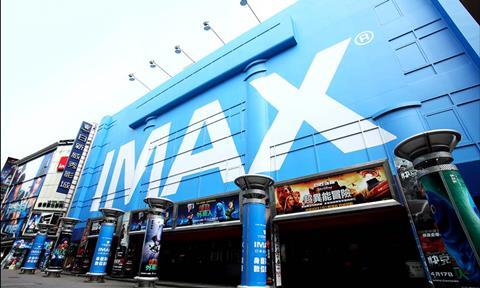The competition is fierce, with Dolby, Ymagis and exhibitors muscling in on the market.

Premium large format (PLF) is a growing part of the market, with well over 2,500 screens in place at the end of 2016, according to IHS Markit.
Exhibitors such as Vue (VueXtreme) and Odeon (iSense) have launched their own PLF brands so as to avoid paying overheads to market leader Imax (though the future of iSense must be in doubt given Imax’s $25.7m [£20m] deal with Odeon/UCI parent AMC to convert 25 new sites in Europe).
The core PLF technology combines systems allied to comfort seating and large screens (15 metres and above). More recently this has also included high dynamic range (HDR) and immersive sound systems. This space is set to grow further as CinemaNext, the exhibitor services unit of French group Ymagis, rolls out Sphera.
This concept unites a Dolby Atmos-based audio system with EclairColor HDR technology from Ymagis subsidiary clair and LED lighting for ambience (around seats and the foyer), but uniquely this does not require a large-dimensioned screen. Instead, CinemaNext is targeting exhibitors with small- to mid-sized screens who may feel they lack the marketing clout to compete with Imax or PLF rival Dolby Cinema. The first handful of European Sphera installations are expected to be announced at CineEurope.

“We think you can deliver a premium immersive experience in a small theatre if it’s well done,” explains Till Cussmann, SVP at CinemaNext. “Existing premium models are very expensive and limited to those exhibitors willing to revenue share. Many exhibitors don’t have the resources for revenue sharing and are not necessarily best equipped to market their own premium concept. There’s a wide base for a less expensive turnkey solution combined with marketing expertise.”
The market’s dominant HDR format is Dolby Cinema, sold by Dolby as part of a PLF package that includes Atmos and Christie laser projectors. This reportedly costs around $562,000 (€500,000) per screen. In contrast, EclairColor will cost “below $56,000 (€50,000) for a small room and $90,000 (€80,000) for a large room”, according to Jean Mizrahi, Ymagis president and CEO.
Separately, CinemaNext is promoting EclairColor as a mass-market opportunity for cinemas to present films in high dynamic range. Developed with Sony projectors, the software system also works with some Barco projectors, and other vendors are expected to add compatibility by year end. Exhibitors with existing projectors from these brands will be required to pay a small fee for a firmware upgrade.
Currently only Eclair in Paris is equipped to perform mastering in EclairHDR, which adds an extra $22,400 (€20,000) per film to the DCP cost, but the company aims to license the technology to post-production system manufacturers to give productions a wider range of mastering options.
The trick with any new format is to get content made in it. Francois Ozon’s Cannes Competition title Amant Double is one of 35 titles already mastered in the format. La La Land was the first studio title released in EclairColor. “From the studio’s perspective, it doesn’t make sense to provide content in any format while there are no screens,” says Mizrahi. “Soon, we will have enough screens to make it attractive for them.”

Present on more than 50 screens in France, Germany, Italy and Tunisia, and with a pilot install at London’s Curzon Soho, CinemaNext expects 80 screens by year end. With around 300 committed, mostly between AMC and Wanda, Dolby has installed more than 70 Dolby Cinema screens, and has released or announced 75 films to be formatted for the concept. “With video platforms like Netflix investing massively into content and HDR, we believe cinema can’t be left behind,” says Mizrahi. “High dynamic range is a must. The improvement in quality is huge and the consumer proposition compelling when the additional outlay for studios and exhibitors is very limited.”
























No comments yet